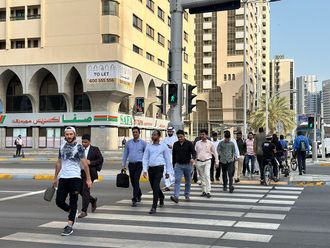While the great majority of documentary credit operations work smoothly and can be completed successfully and without problems, there appears to be little doubt that the system of documentary credits in international trade is capable of abuse in many ways.
The motives could be as varied as criminal intention or the wish to avoid tedious foreign exchange regulations, or the innocent misunderstanding of the operation of documentary letters of credit (LC).
Due to the possibility that banks could be held liable in cases related to abuse of credits, it would be useful to highlight some examples of such abuses:
Names of non-existent banks are used, moreover the headed paper of some existing banks has been simulated for the purpose of a fraud (some of these forged LCs are full of spelling mistakes and the simulation is obvious).
It is now normal practice for banks advising or confirming at the request of certain suspicious banks to exercise great care in checking the reliability of that bank or to involve intermediary banks in the operation.
Bills of lading are issued evidencing the loading of cargo which has never been loaded. The false bill is used to draw up the LC, the shipper disappears and the ship is found later sailing under a new name.
A conspiracy between the buyer and the seller wherein the goods are shipped and the LC is drawn, but the consignee never takes delivery or the goods are worthless.
The conspiracy may also include government officials. In certain cases it was suspected that not only were the goods never shipped and false bills of lading issued, but certificates of quality issued by the government officials were either forged or the signature of the relevant government official obtained by improper means.
In certain places it is sometimes the practice of unscrupulous customers to obtain credit facilities from their bank and then use the money for other purposed.
A LC is then set up when, in fact, no purchase of goods is involved. Documents required by the LC will then be fabricated and some people connected with the drawer will, as beneficiary, present to the bank these documents for cash.
Falsified documents are used in connection with LC to overcome the problems of trade embargoes. In some cases indemnities are given to owners and masters of ships should any consequences arise out of stating, for instance in the bill of lading, that goods have been loaded in a certain port instead of another port.
There are also cases in which false statements are made in preference to the ship being tied up in port, with all the attendant delays and costs.
While the dispute is being settled, the goods may already be on board and especially where their value is smaller than the cost of the ships in port, the master may decide to offer a clean bill of landing against an indemnity.
The International Chamber of Commerce considers the giving of such an indemnity a "dangerous practice".
It also appears that fraudulent transactions under LCs are entered into to circumvent foreign exchange regulations.
In some places it is not unusual for the names of title-holders on documents to be obliterated.
It is also an abuse of the documentary credits system if the buyer, having discovered either that the goods do not comply with his specifications or that the quality of the delivered goods is not to his satisfaction, applies for an injunction prohibiting the confirming or issuing bank from effecting payment under the LC.
In the absence of established fraud, this is a clear abuse as the banks deal in documents and not in goods.
Such practices endanger the whole system as there is no instrument to protect an international credit operation against the interference of national courts.
The author is a legal consultant on banking and stock market laws.
Legal Perspective: Abuse of documentary credits in global trade
While the great majority of documentary credit operations work smoothly and can be completed successfully and without problems, there appears to be little doubt that the system of documentary credits in international trade is capable of abuse in many ways.











